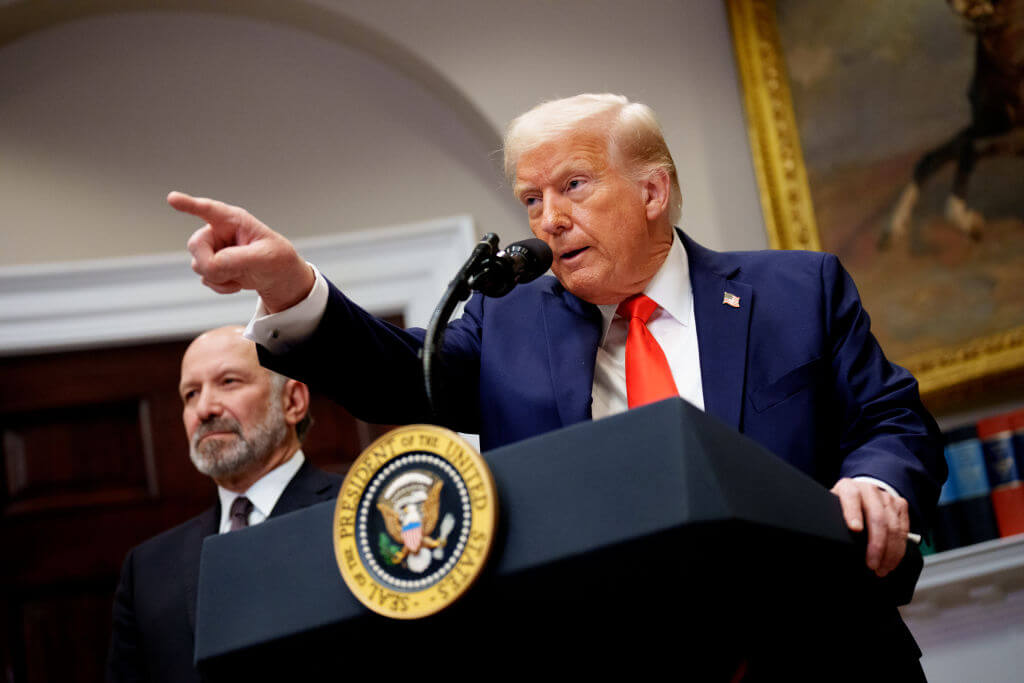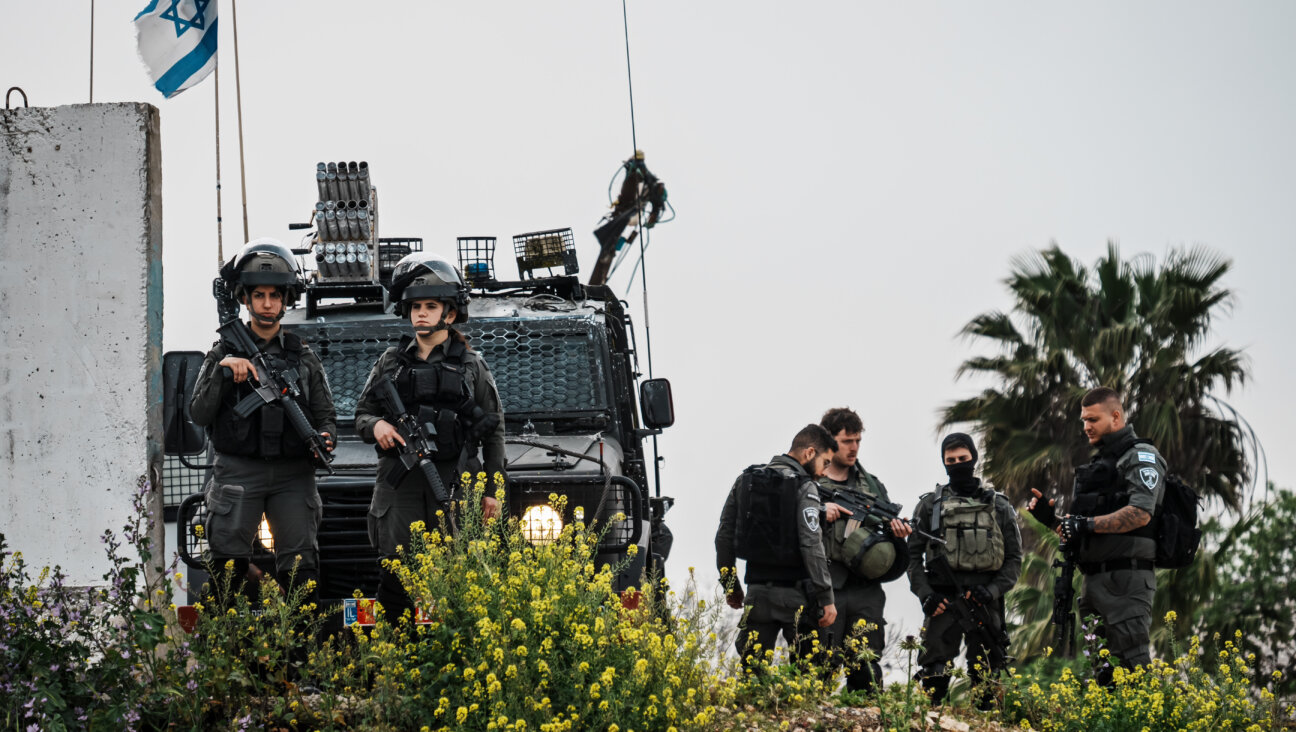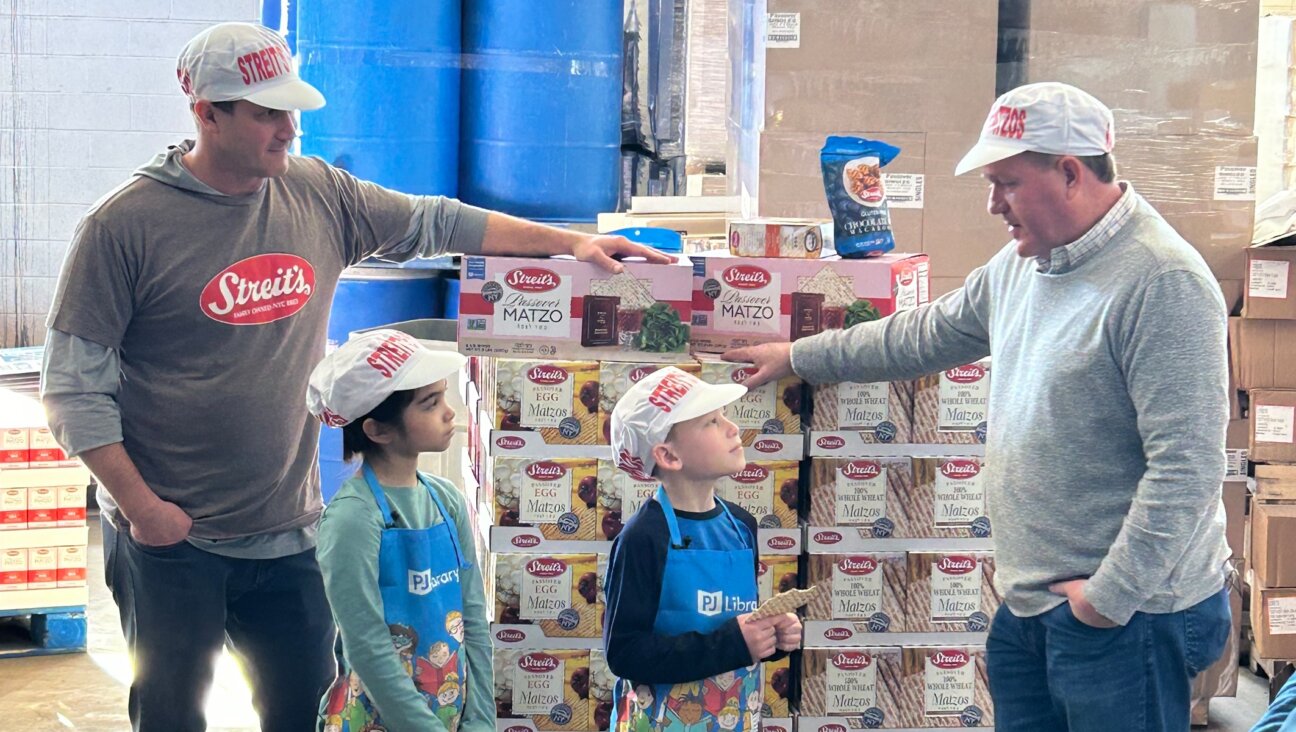Drawing Peace In the Middle East
The worst-kept secret of the comic book industry of the last six decades has been the genre’s Jewish subtext. Call it the superheroes’ secret Jewish identities, going back to a couple of ghetto kids in pre-World War II Cleveland who created Superman as an updated Golem.
Now, the masks are off. Marvel Enterprises, the giant of the industry, has created a decidedly different hero — one who has traded in his tights for an Israeli army uniform: a pilot named Sholem.
When his daughter is killed by a suicide bomber at Yad Vashem, Sholem, in true superhero fashion, enlists the help of a Mossad buddy to avenge his daughter’s death valiantly. It’s part of the shocking beginning to “Blow Up,” possibly the world’s first comic that begins with a suicide attack at a Holocaust memorial museum. It’s the first story in Marvel’s newest comic book, “411,” which hits newsstands today.
The 411 on “411” is that it’s a brand-new three-book series that seeks to educate readers about conflict resolution. But it’s also one of a growing number of comic books and strips that explore issues facing the embattled countries of the Middle East — in particular the conflicts dividing Israelis and Palestinians.
It all began in the summer of 2001 with the publication of Joe Sacco’s critically acclaimed book “Palestine” (Fantagraphics) — a first-person account of life in the territories during the winter of 1991-1992 — which was credited by many with reinvigorating a long-lost art of “comics journalism.”
Since the Middle East has remained the focal point of global consciousness — thanks, in unequal parts, to the second intifada, the September 11 attacks and the war on terrorism — the region is increasingly popular fodder for the comics world. The April 29 English translation of real-life Iranian princess Marjane Satrapi’s graphic novel “Persepolis” (Pantheon) — about her childhood under the veil — is generating much advance buzz, while political cartoonists, once relegated to poking fun of Al Gore’s dancing abilities, broach the topic of the Middle East with increasing fervor.
“Since September 11 there’s been a lot more interest in the [comics] field in politics — which inevitably leads to the Middle East,” said the managing editor of the Comics Journal, Milo George. “At least with American cartoonists, their interests in other people and cultures comes into play when it affects them. I’m guessing most cartoonists — like most Americans — didn’t know what the Koran was until September 11. Since then, more cartoonists have been attracted to these flash points.”
In terms of the Israeli-Palestinian conflict, two upcoming books from decidedly different camps explore the topic: Marvel’s “411” and, from veteran underground comics author Seth Tobocman — best known for the radical “World War 3 Illustrated” — the upcoming book “Portraits of Israelis and Palestinians” (Soft Skull Press).
While differing in subject matter, style and tone, both “411” and “Portraits” send the reader the same message vis-à-vis the conflict: Violence and war are bad; human dignity and peace are good.
In the “Blow Up” story in “411,” Sholem, devastated by his daughter’s violent death, decides to “bomb” both Tel Aviv and a village near Nablus. He bombs them, that is, with fliers — ones that read: “You killed my daughter — I could have killed yours. Stop now before you know my pain.”
The book represents a departure for Marvel, not only because it features “real” people rather than superheroes. “In comic books, you fight fire with fire,” said Bill Jemas, Marvel’s president and chief operating officer. “With ‘411,’ we show that every once in a while you can fight fire with water.”
The book also features two more stories with happy endings in strife-torn areas: Northern Ireland and Afghanistan.
While Jemas denies the project has a political bent — he notes, for example, that an essay critical of the Bush administration by playwright Tony Kushner was eventually rejected — Gene Kannenberg, a professor of English at the University of Houston, Downtown, and editor of the Web site www.comicsresearch.org, said, “It’s not a new thing for comics to have a political consciousness. Comic heroes were fighting World War II long before America was.”
The 1940s were known as the “Golden Age” of comics, a time in which superheroes fought evil alongside Allied troops. The industry hit a low point the following decade; spurred, in part, by psychiatrist Fredric Wertham’s “The Seduction of the Innocent,” an exaggerated, anti-comic polemic, comic books mirrored pop-fads such as monster movies and Westerns. The early 1960s saw a revival of the genre — the “Silver Age” — when superheroes like Spider-Man fought evil with one eye winking.
However, with the exception of underground comics during the late 1960s, which mirrored the counterculture movement at large, comic books turned to pure fantasy, or, as Jemas called it, “comic books about comic books.”
With “411,” Marvel “is following one of the cultural moments in the U.S. right now, which is celebrating common heroes, not just fantasy ones,” he said.
According to “411” contributor David Rees, an indie cartoonist who found fame when he created his Mideast-oriented strip “Get Your War On” in the wake of the war in Afghanistan, “it seems like an unusual project — especially for a superhero comic company.”
“This is more back-to-the-roots… graphic storytelling, overall,” said Jemas. “This business was built on political cartoons, illustrated classics [like ‘The Adventures of Huckleberry Finn’] and non-superhero stuff. It was a pretty solid business. Superheroes were more of a function of the brilliant minds that Stan Lee [the creator of Spider-Man] assembled around himself.
“A lot of the rhetoric in war, and a lot of the ways we tell stories in comic books, we dehumanize the bad guys,” Jemas continued. “Part of resisting the violent reflex is to think of your enemy as a living, breathing person with his own life.”
Which is exactly the tactic Tobocman employs in “Portraits.” Less pat and plot-driven than “Blow Up,” “Portraits” serves up visual slices of Israelis’ and Palestinians’ lives: riding the bus, visiting a hospital in Ramallah, praying in Safed and playing in the West Bank village where Tobocman volunteered as an art teacher.
“I went to Israel to resolve my own contradictions and animosities and my need to understand it,” said Tobocman, who added that, growing up, “we pretty much celebrated the Six-Day War in our house.”
On the day of Tobocman’s departure to Israel last summer, the New York Post ran a large picture of an X-ray of a shrapnel injury from a suicide bombing, Tobocman recalled. “This is the type of media we have about the Middle East: disasters of war, images of people killing other people. Of course, there are millions of people there who get through their day, every day. I had exactly the opposite experience of what I was expecting.
“I wanted to bring something back, to find a way to address these issues without dehumanizing the people, without reducing them to carrion.”
The message of “Portraits” — somehow similar to “411” — is “humanity,” he said. “We’re all basically the same; we all have the same rights.”
Prior to creating “Portraits,” Tobocman had focused primarily on cartooning domestic issues such as homelessness and housing issues. What prompted his trip to the Middle East was that it invaded his thoughts, his sleep, his everyday existence. “I couldn’t get away from it,” he said. “I don’t know if I was interested — I really didn’t want to deal with it.”
But like his peers, dealing with it he is. Since the terrorist attacks and the war on Iraq began, “political cartooning has been much more invigorated, obviously,” said George, the Comics Journal editor. “Finally they’ve got something to really chew on. Clinton’s sex life just didn’t offer much grist for the mill.”
The Forward is free to read, but it isn’t free to produce

I hope you appreciated this article. Before you go, I’d like to ask you to please support the Forward.
Now more than ever, American Jews need independent news they can trust, with reporting driven by truth, not ideology. We serve you, not any ideological agenda.
At a time when other newsrooms are closing or cutting back, the Forward has removed its paywall and invested additional resources to report on the ground from Israel and around the U.S. on the impact of the war, rising antisemitism and polarized discourse.
This is a great time to support independent Jewish journalism you rely on. Make a Passover gift today!
— Rachel Fishman Feddersen, Publisher and CEO
Most Popular
- 1
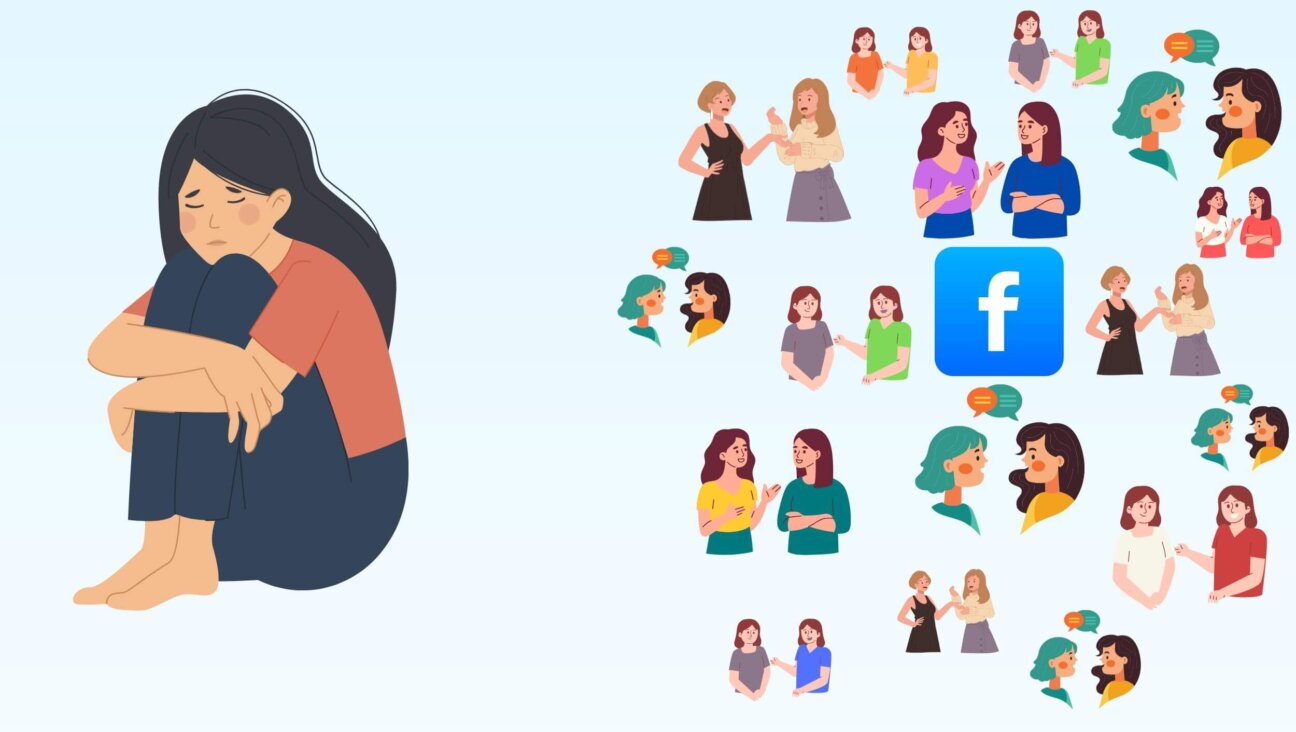
Opinion My Jewish moms group ousted me because I work for J Street. Is this what communal life has come to?
- 2

Fast Forward Suspected arsonist intended to beat Gov. Josh Shapiro with a sledgehammer, investigators say
- 3

Fast Forward How Coke’s Passover recipe sparked an antisemitic conspiracy theory
- 4

Politics Meet America’s potential first Jewish second family: Josh Shapiro, Lori, and their 4 kids
In Case You Missed It
-
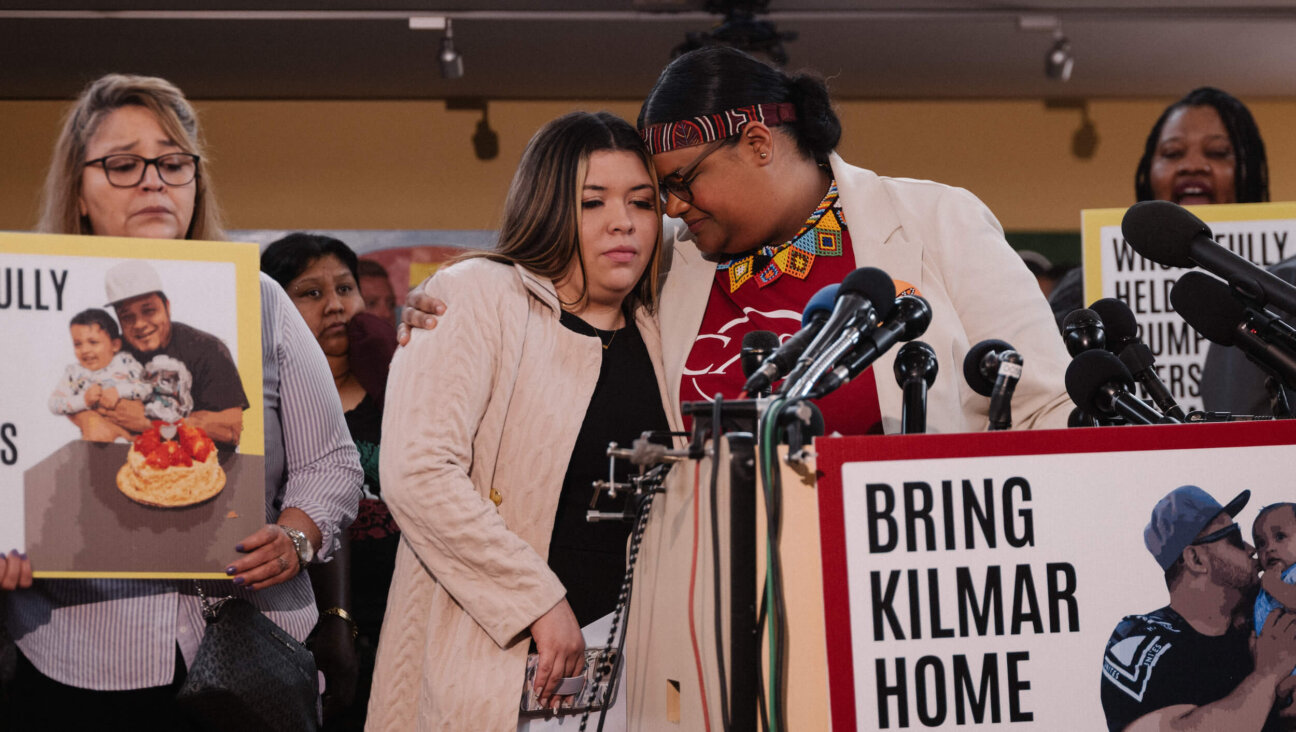
Opinion This Nazi-era story shows why Trump won’t fix a terrifying deportation mistake
-

Opinion I operate a small Judaica business. Trump’s tariffs are going to squelch Jewish innovation.
-

Fast Forward Language apps are putting Hebrew school in teens’ back pockets. But do they work?
-
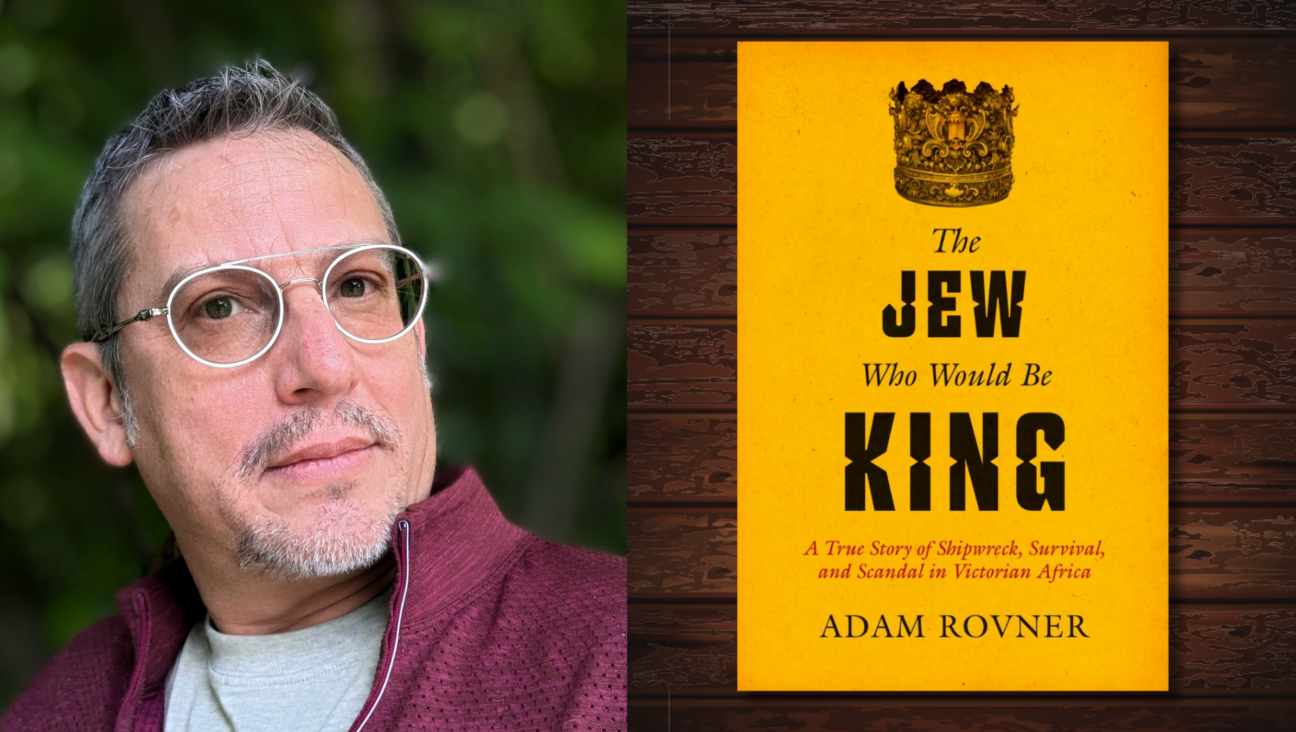
Books How a Jewish boy from Canterbury became a Zulu chieftain
-
Shop the Forward Store
100% of profits support our journalism
Republish This Story
Please read before republishing
We’re happy to make this story available to republish for free, unless it originated with JTA, Haaretz or another publication (as indicated on the article) and as long as you follow our guidelines.
You must comply with the following:
- Credit the Forward
- Retain our pixel
- Preserve our canonical link in Google search
- Add a noindex tag in Google search
See our full guidelines for more information, and this guide for detail about canonical URLs.
To republish, copy the HTML by clicking on the yellow button to the right; it includes our tracking pixel, all paragraph styles and hyperlinks, the author byline and credit to the Forward. It does not include images; to avoid copyright violations, you must add them manually, following our guidelines. Please email us at [email protected], subject line “republish,” with any questions or to let us know what stories you’re picking up.








